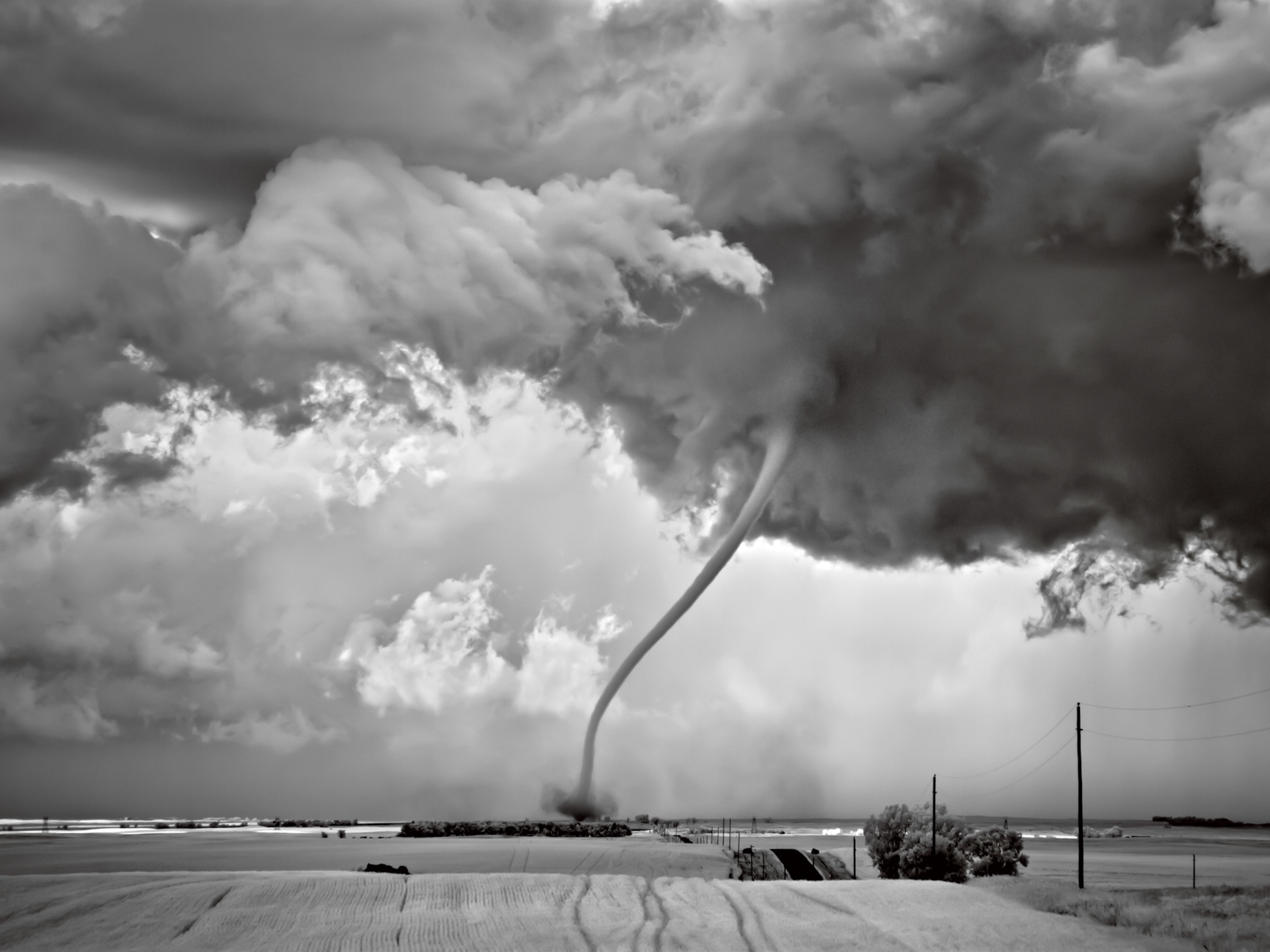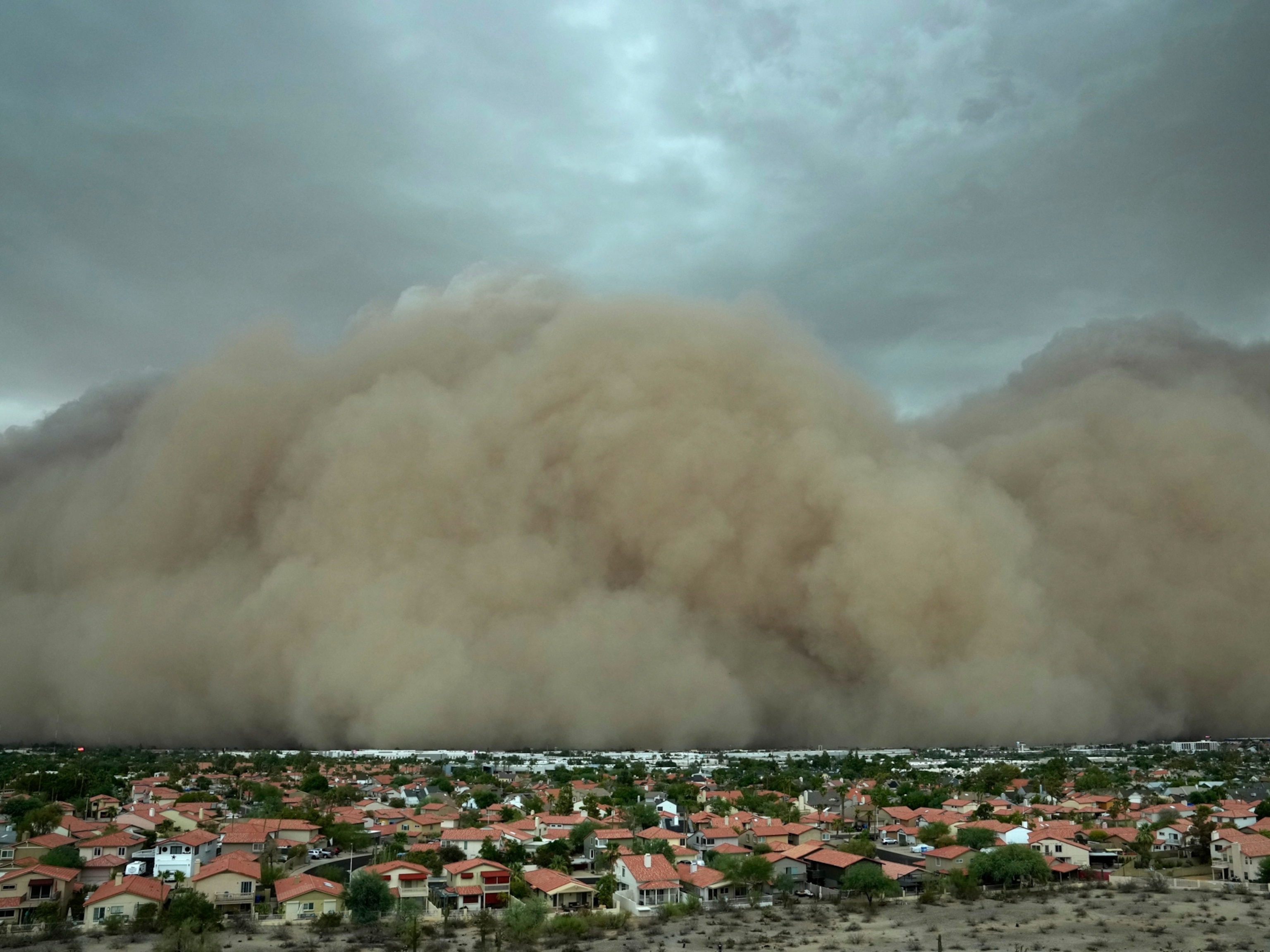
GPS Reveals Hurricane Wind Speeds
GPS signals tell a lot about how fast the wind is blowing during a hurricane.
Scientists have a new way to measure how fast the wind is blowing.
That's because over the past decade, scientists have learned how to measure the speed of the wind at the ocean's surface by observing how much GPS signals are distorted when bouncing off the moving water waves. Now, a new paper reports that such wind speed measurements can be used with confidence when conditions are right, even to measure the winds of hurricanes.
Improved wind speed measurements could help meteorologists better understand and predict storms, says Stephen Katzberg, a distinguished research associate at the NASA Langley Research Center in Hampton, Virginia.
In the early 1990s, Katzberg and colleagues at NASA were asked to evaluate a U.S. Navy satellite for a civilian application in global ocean altimetry. The U.S. Navy was beginning to use GPS in their satellites and the team became intrigued with the question of whether the GPS signals could reflect off the surface of the ocean.
"Normally GPS signals go to a receiver in your car or cell phones, but some of it reflects off surfaces," Katzberg told National Geographic. "It's an incidental thing that turns out to be pretty practical, especially because GPS now illuminates pretty much the entire Earth."
In the 1990s, Katzberg and James Garrison, a NASA colleague who is currently at Purdue University, continued to study the usefulness of GPS in remote sensing for environmental information. As he did, signal receiver technology and software processing also improved.
Around 2000, Katzberg and Garrison began to ask if GPS could be used to measure the speed of ocean surface winds. "The real brass ring was ocean surface winds in hurricanes," he said.
NASA partnered with NOAA to get GPS receivers on Hurricane Hunter airplanes. "By about 2006 we had developed the required calibration," said Katzberg. This month, Katzberg and colleagues published a paper in the peer-reviewed journal Radio Science that demonstrates how their efforts have paid off in terms of accuracy.
"We're using something that most people would ignore, because GPS is transmitting all the time," said Katzberg.
How Does It Work?
Katzberg explained that a GPS signal is made up of radio waves emitted by a GPS satellite. When the waves strike the surface of the ocean, about 60 percent of the signal bounces off.
The more wind that pushes across water, the rougher the surface of the sea gets. Bigger, more chaotic waves break up the GPS radio waves more as they reflect off the surface. A receiver can compare that disruption to the GPS signal coming from any particular satellite, and then use software to estimate the surface wind speed based on past data and calibration.
Katzberg says the technique has an accuracy better than 5 meters per second (about 11 miles per hour or 18 kilometers per hour), compared with an accuracy of about 0.5 meters per second (1.1 miles per hour or 1.8 kilometers per hour) for direct measurement by NOAA's dropsondes—tubes that are loaded with instruments and then dropped from a plane. They float down with a parachute, collecting data as they fall.
The GPS-based system works best over large expanses of water, Katzberg said. It cannot measure wind speed over land because it requires a change in the roughness of the surface, and that doesn't happen on a measurable scale as wind blows over the land. GPS can be used to measure whether something is ice or water, however, because there is a big difference between those two states of matter in terms of how they reflect signals.
For the receivers, Katzberg says, "We use very inexpensive systems, and no bigger than what is in a cell phone. It is basically throwaway, and we can glue it to the bottom of an airplane, a model airplane, or whatever can get up high."
For his studies, Katzberg placed the receivers on NOAA research planes, but he said there is no reason why they couldn't be put on commercial jets or drones. In fact, the GPS technology required to do these measurements is already in many consumer cell phones, representing an additional cost of "a few dollars" to implement such a receiver.
Katzberg pointed out that the technique is not free since it relies on GPS satellites putting out the required signals, but he added that they are already in place.
Why Is It Important?
"Our paper showed that you can make competitive measurements [of wind speed] with GPS," Katzberg said. He explained that the results stood up well to the traditional technique of instruments dropped from a research plane, when conditions were right.
GPS can only measure wind speed right above the ocean's surface. It also has difficulty with the eye of a storm, where wind speed is low but the water remains choppy.
To Katzberg, GPS is likely to prove a powerful new tool to meteorologists, giving them additional information about storms. They will still need to use dropsondes to measure high-altitude winds, but they may be able to decrease the number of drops—a boon considering each dropsonde costs several hundred dollars and can be used only once.
Katzberg said the beauty of using GPS to measure phenomena is that receivers are cheap and easy to obtain, so they will be available to many scientists. "This is unbroken ground in remote sensing research," he said. "The results for GPS planted a little flag in this ground, but the sky is the limit."
He added that the technology can be used to measure the amount of moisture in the first few inches of soil. The wetter the ground, the better it reflects the signal.
What's Next?
Katzberg said a future step will be the ability to measure the direction of the wind with such remote sensing techniques. He said work with optical frequencies is showing promise, although the data is not yet conclusive.
In 2016, NASA will be launching the Cyclone Global Navigation Satellite System to expand the capability of GPS for global remote sensing of ocean surface winds.
But to Katzberg, the holy grail would be using signals that are stronger than GPS, like those used to transmit satellite radio and television. With stronger signals, scientists can get much better performance and resolution of what they are studying, he said.
The Sirius or XM satellite radio signal is 10,000 times more powerful than a GPS signal, he said. "We've just cracked open the door with using these 'signals of opportunity' now, but the next step is what can you do with all these other frequencies," said Katzberg.








